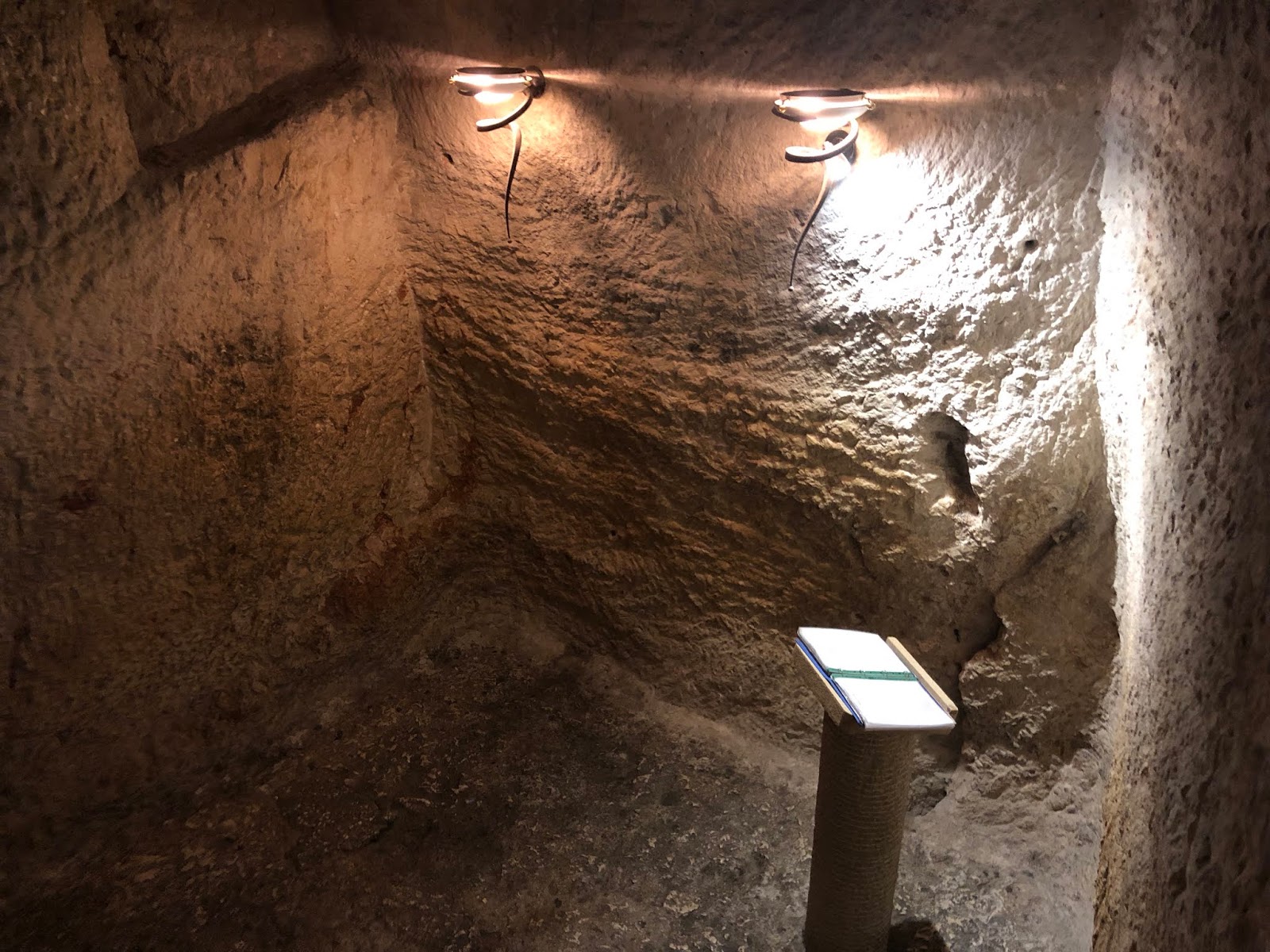The Prayer & The Boss
It’s the most well-known prayer in the world.
Many of the world’s nearly 2.4 billion Christians pray the Lord’s Prayer as they gather for worship, or day-by-day as they live their lives. In the early centuries of the Christianity, those preparing for baptism at Easter would be taught the prayer of Jesus, so that as they emerged from the waters of baptism, they’d pray it as their first words to God in their new life. Two millennia later, even people who are mostly unfamiliar with Christian faith, or have a complicated connection to it, are often at least somewhat familiar with its well-worn cadences.

Watching a recording of Bruce Springsteen’s musical residency at the Walter Kerr Theatre in New York some months ago, I was struck as I saw the Boss himself (who has quite a tangled relationship with the Roman Catholic Christianity of his youth) recite the Lord’s Prayer from the stage.
Lead Us Not Into Temptation (?)
Famous as the prayer of Jesus is, many struggle with its final petition: “Lead us not into temptation,” in the King’s English. Does God tempt people into sinning? Already in the second century, the African church father Tertullian was clarifying this for those learning the faith in his Carthage congregation: “Far be it that the Lord should seem to tempt, as though he were either ignorant of the faith of each of us, or sought to dethrone it…”
No, Jesus is getting at something else. Newer versions of the English Bible clarify what we pray for when they translate this term as “testing” or “time of trial.” I appreciate Sarah Ruden rendering it as “the Ordeal.” Elsewhere in the New Testament, the word (peirasmos in Greek) describes the apocalyptic conflict between God and the dark forces of evil–“the world, the flesh, and the devil.”
As we near Holy Week, we’ll soon follow Jesus to the Garden of Gethsemane, where he urges his followers, “Pray that you may not come into the time of trial” (Luke 22.40, 46). “Pray that you’re not overcome by the Ordeal.” Jesus is imploring his followers to pray that they not be swept under by the darkness he himself was about to face. As Fleming Rutledge puts it, “There is a sense in which the Gethsemane scene is the opening episode of Christ’s passion, and therefore the beginning of the first day of the age to come.”
As we follow Jesus from the Galilean hillside where he first taught, “When you pray, say. . . ‘Do not bring us to the time of trial’,” all the way to Gethsemane and Golgotha, we arrive at the beautiful, terrible mystery of the Cross. Christ delivers us from evil by absorbing its full weight in himself. Jesus rescues us from the Ordeal by suffering it. He lifts us from darkness by giving himself to be plunged down into it.
Darkness Is My Only Companion

One of the more holy moments I’ve ever experienced happened as I participated in a study group tracing Jesus’ final hours through the city of Jerusalem. We came to a house believed to belong to Caiaphas, where Jesus would have been condemned by the Jewish authorities. Beneath the stone structure, there was a subterranean fissure that Jerusalem’s high priest would have used as a holding cell of sorts: prisoners would languish in that small, black cave before being marched off to whatever fate awaited them. Christians have traditionally recognized that this dark hole is where Jesus would have spent his last hours before his trial before Pilate and subsequent execution.
Our group descended into the cave, now dimly lit. Against one wall, there was a simple wooden lectern. And on it, printed in 150 languages, were the words of Psalm 88. This is the “psalm of darkness,” the most hopeless prayer in the Bible. There’s not so much as a single ray of light, and it closes in complete desolation: “darkness is my only companion.” We stood in that shadowy cavern where Jesus likely spent his last hours, and prayed that ancient, anguished cry. And I rejoiced that, because of Christ, there is no hole so deep that we’re alone in it; no ordeal that will overcome us, because of the One who was overcome for us.
########
The Traveler’s Path: Finding Spiritual Growth and Inspiration Through Travel
by Douglas Brouwer
from Reformed Journal Books



5 Responses
Gimli in the Paths of the Dead.
This helpful, on the Prayer. Thank you.
Thanks Jared.
Thank you, Jared. I needed this wise, encouraging, hopeful message during these dark times.
Amen! And thank you, Jared, for helping us see the light in a very dark psalm.
Thank you for this powerful Holy Week reflection, Jared!
Your description of “the whole” is a vivid portrayal of the “sheol” (miry pit, place of the dead) that Jesus takes on in his suffering. I love the words of the Heidelberg Catechism on this, in its gloss on the “descent to hell.”
Q. Why does the creed add, “He descended to hell”?
A. To assure me during attacks of deepest dread and temptation that Christ my Lord, by suffering unspeakable anguish, pain, and terror of soul, on the cross but also earlier, has delivered me from hellish anguish and torment.